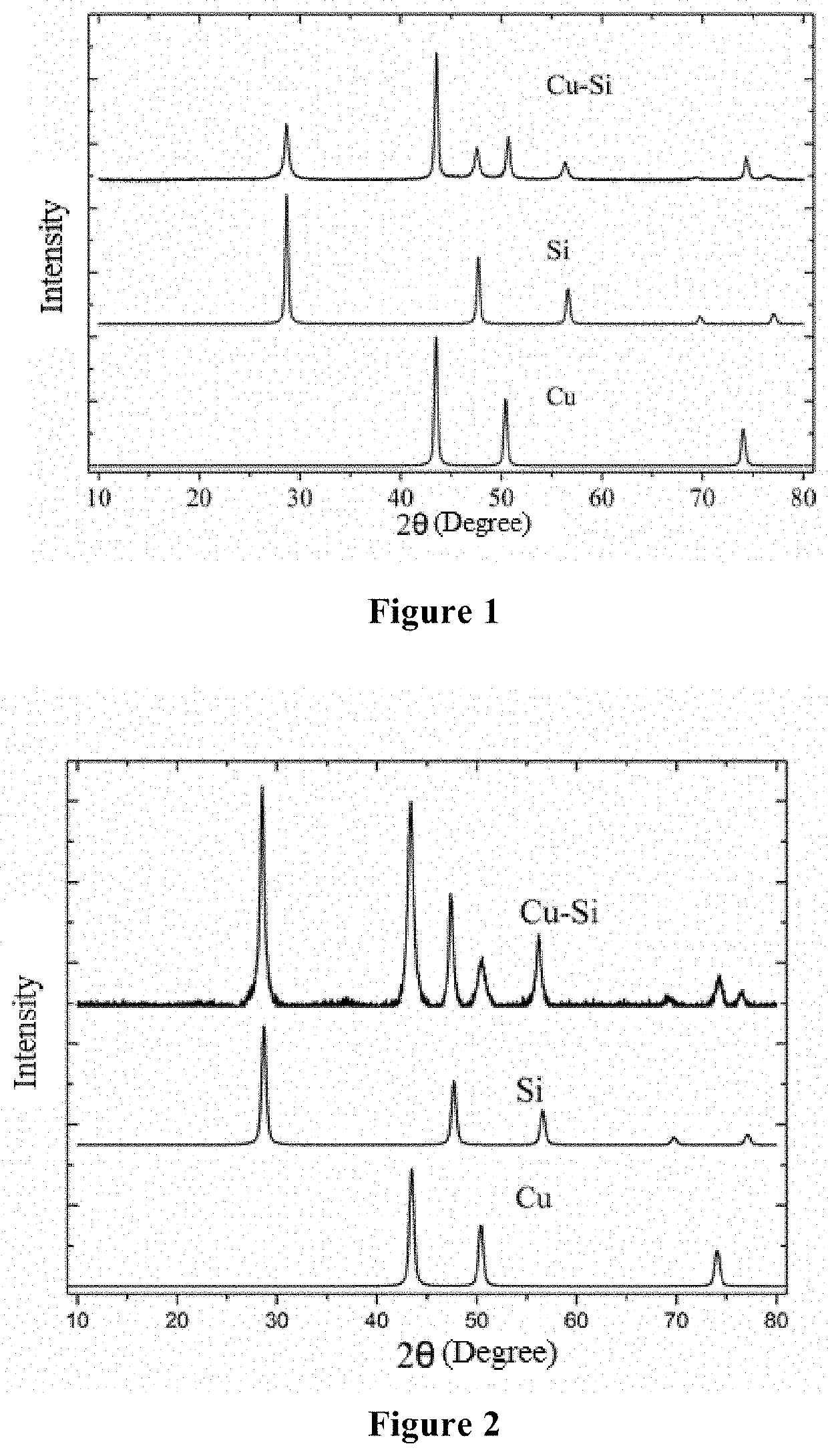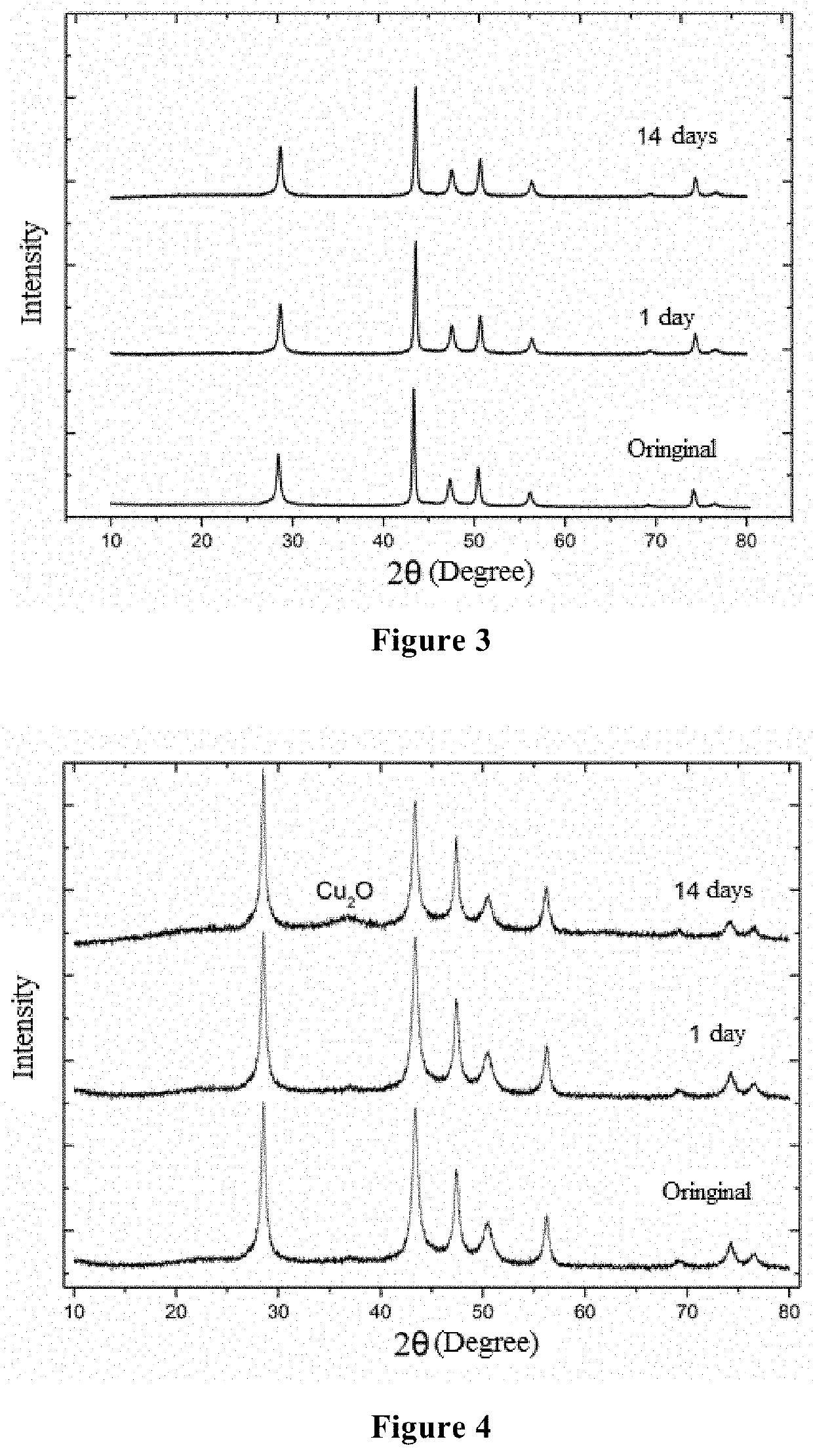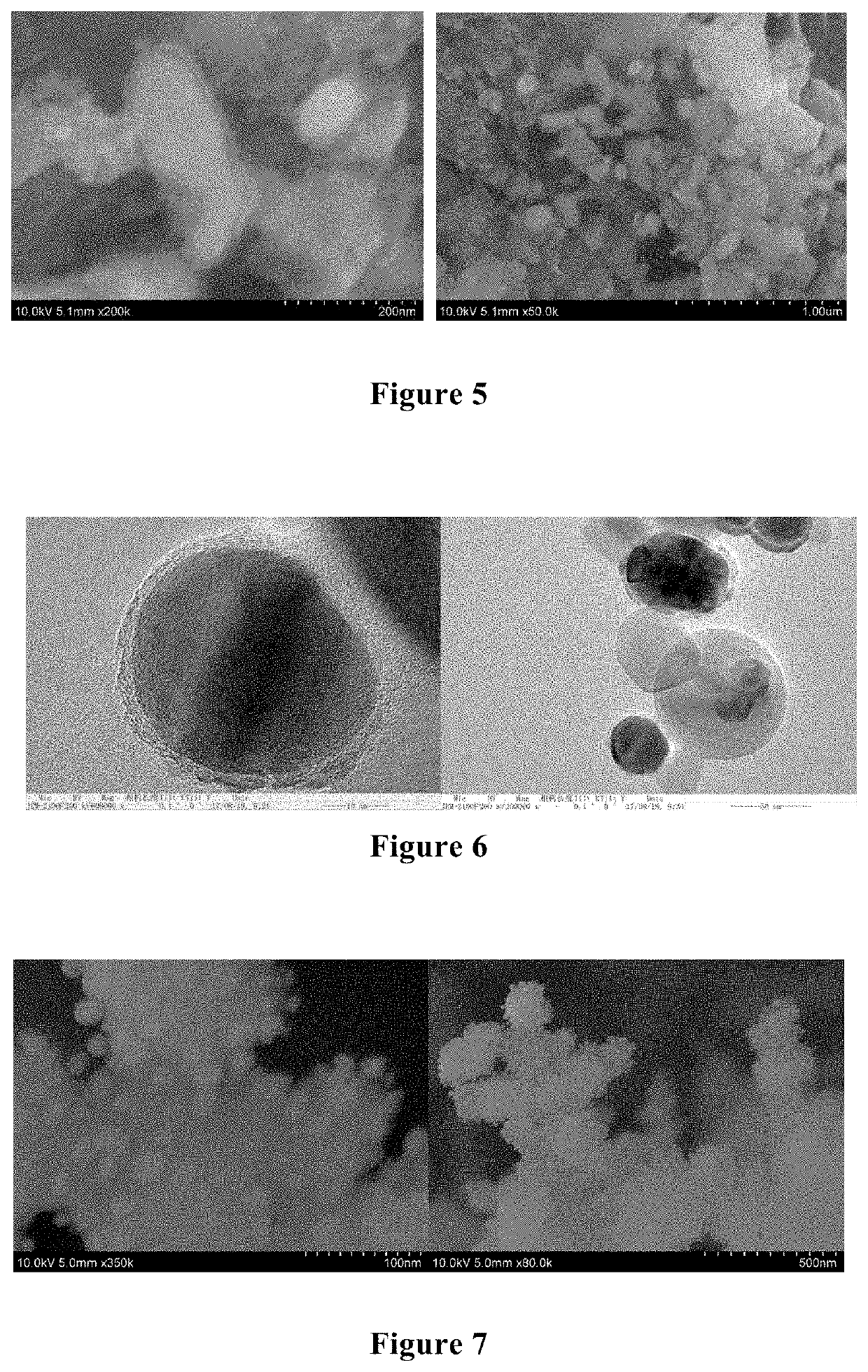Double layer-coated nano-silicon negative electrode material, a method for preparing the same and use thereof
- Summary
- Abstract
- Description
- Claims
- Application Information
AI Technical Summary
Benefits of technology
Problems solved by technology
Method used
Image
Examples
example 1
[0043](1) 0.5 g of silicon powder with a particle size of 100 nm was weighed and added into 1000 ml water, then 20 ml of ethanol was added to obtain a nano-silicon suspension, and then the nano-silicon suspension was placed in an ultrasonic machine and subjected to ultrasonic treatment for 2 h;
[0044](2) The ultrasonically dispersed nano-silicon suspension was continuously stirred with a magnetic stirrer while nitrogen gas was continuously introduced into the solution. Then a copper plating agent having the following composition was added to the solution: 1 g CuSO4, 10 g potassium sodium tartrate, 10 g ethylenediaminetetraacetic acid, and 5 mg 2,2-bipyridine, then sodium hydroxide was added to adjust pH to 10. Then 0.6 g sodium borohydride was added into 200 ml water, sodium hydroxide was also added to adjust pH to 10, and then it was added dropwise into the nano-silicon suspension at a rate of about 30 drops / min, and finally it was filtrated, washed with a copper protective agent be...
example 2
[0046](1) 0.5 g of silicon powder with a particle size of 100 nm was weighed and added into 1000 ml water, then 20 ml of ethanol was added to obtain a nano-silicon suspension, and then the nano-silicon suspension was placed in an ultrasonic machine and subjected to ultrasonic treatment for 2 h;
[0047](2) The ultrasonically dispersed nano-silicon suspension was continuously stirred with a magnetic stirrer while nitrogen gas was continuously introduced into the solution. Then a copper plating agent having the following composition was added to the solution: 1 g CuSO4, 10 g potassium sodium tartrate, 10 g ethylenediaminetetraacetic acid, and 5 mg 2,2-bipyridine, then sodium hydroxide was added to adjust pH to 10. Then 0.6 g sodium borohydride was added into 200 ml water, sodium hydroxide was also added to adjust pH to 10, and then it was added dropwise into the nano-silicon suspension at a rate of about 30 drops / min, and finally it was filtrated, washed with a copper protective agent be...
example 3
[0050](1) 0.5 g of silicon powder with a particle size of 100 nm was weighed and added into 1000 ml water, then 20 ml of ethanol was added to obtain a nano-silicon suspension, and then the nano-silicon suspension was placed in an ultrasonic machine and subjected to ultrasonic treatment for 2 h;
[0051](2) The ultrasonically dispersed nano-silicon suspension was continuously stirred with a magnetic stirrer while nitrogen gas was continuously introduced into the solution. Then a copper plating agent having the following composition was added to the solution: 1 g CuSO4, 10 g potassium sodium tartrate, 10 g ethylenediaminetetraacetic acid, and 5 mg 2,2-bipyridine, then sodium hydroxide was added to adjust pH to 10. Then 0.6 g sodium borohydride was added into 200 ml water, sodium hydroxide was also added to adjust pH to 10, and then it was added dropwise into the nano-silicon suspension at a rate of about 30 drops / min, and finally it was filtrated, washed with a copper protective agent be...
PUM
 Login to View More
Login to View More Abstract
Description
Claims
Application Information
 Login to View More
Login to View More - R&D
- Intellectual Property
- Life Sciences
- Materials
- Tech Scout
- Unparalleled Data Quality
- Higher Quality Content
- 60% Fewer Hallucinations
Browse by: Latest US Patents, China's latest patents, Technical Efficacy Thesaurus, Application Domain, Technology Topic, Popular Technical Reports.
© 2025 PatSnap. All rights reserved.Legal|Privacy policy|Modern Slavery Act Transparency Statement|Sitemap|About US| Contact US: help@patsnap.com



